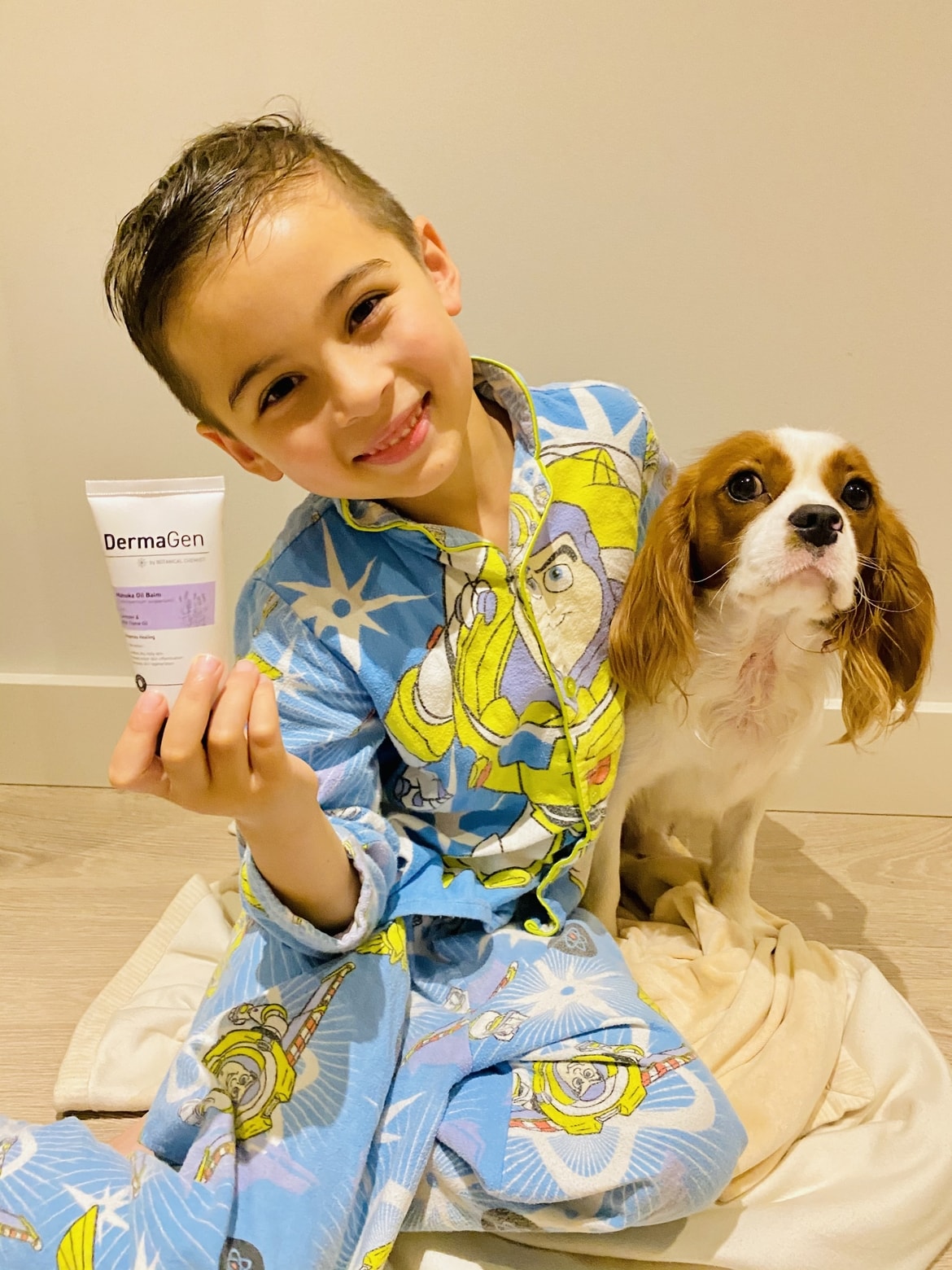Red Skin Syndrome, RSS, occurs as a reaction to topical corticosteroid creams (ie hydrocortisone or methylprednisolone) which are commonly prescribed for skin conditions such as eczema and dermatitis. It is often diagnosed when the capillaries of the skin become dilated and causes the entire body to be inflamed, with red and irritated skin, that commonly feels like it’s ‘burning’. However, it is important to note that not everyone’s skin will react the same, and some people may use topical steroids without getting any side-effects.
Symptoms of RSS include :
- Rash that looks more like a red, generalised blush.
- Itching and burning
Other symptoms may include :
- Swelling and fluid under the skin
- Sore eyes
- Nerve pain
- Swollen lymph nodes
- Insomnia

Who Gets Red Skin Syndrome?
It is a self-limiting condition, but it can be very challenging both physically and emotionally to manage the symptoms. It can take between several months to several years for the skin to return to normal, depending on the type of steroid used, where it was applied and the age of the patient. Treatment focuses on relieving the symptoms. There are no exact statistics, but a study conducted in Japan indicated that about 12 percent of those who use topical steroid creams may get RSS. There is no way to know ahead of time who will get RSS and who won’t. A few factors that seem to increase the risk:
- Using strong, high-dose steroids
- Using topical steroids for longer than one year
- Using the product when it’s not necessary
- Using it on skin that is very thin, i.e. on babies, or on eyelids, face or genital areas.

Diagnosis
RSS is often misdiagnosed because it can look like a worsening of the same condition for which the steroid cream was applied to begin with. The doctor may even raise the potency of the steroid cream, or frequency of application, making the RSS even worse. However, there is one key difference: RSS spreads to other parts of the body, even the areas where the steroid was never applied.
RSS may resemble other skin conditions. To rule them out, your doctor may perform a patch test for allergies and a skin biopsy. If other tests come back negative, and you are a regular user of topical steroids, a diagnosis of RSS may be made.











